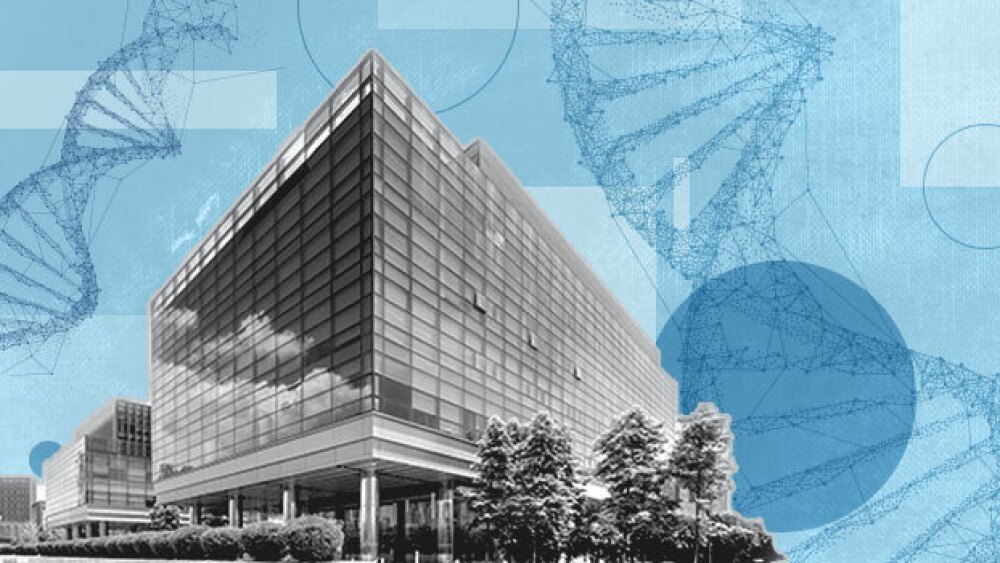Launched in 2021, the public-private consortium on Wednesday updated ASGCT attendees on its efforts to bring adeno-associated virus gene therapies to more rare disease patients.
The Bespoke Gene Therapy Consortium, a public-private collaboration involving the National Institutes of Health, FDA, industry and patient groups intended to help accelerate the delivery of AAV-based gene therapies for rare diseases, is making slow but steady progress, a representative said at the 2024 American Society of Gene & Cell Therapy (ASGCT) annual meeting.
Launched in October 2021, the Bespoke Gene Therapy Consortium (BGTC) has more than $100 million in financial and in-kind commitments funded by a public-private entity called the Accelerating Medicines Partnership (AMP), through which the Foundation for the NIH (FNIH) administers funds provided by industry, government and nonprofits.
Courtney Silverthorn, vice president of strategic alliances and innovation at FNIH’s AMP, told a Wednesday session that BGTC’s announcement last May at ASGCT 2023 identifying eight rare diseases for its clinical trial portfolio “really kicked things off” for the consortium.
“The first year-and-a-half was designed to narrow down and finalize the clinical portfolio that would serve as the proof-of-concept for the goals and aims of the consortium,” Silverthorn said.
Based on the early success of BGTC, FNIH is currently developing a similar cell therapy consortium that will be launched in 2025, according to Silverthorn.
BGTC’s clinical trial portfolio includes eight diseases: Charcot-Marie-Tooth disease type 4J, congenital hereditary endothelial dystrophy, Morquio syndrome, multiple sulfatase deficiency, NPHP5 retinal degeneration, propionic acidemia, retinitis pigmentosa 45 and spastic paraplegia 50.
Silverthorn said all readiness assessments have been completed for the eight assets in the clinical trial portfolio, while progress has also been made on manufacturing agreements. “All of the product for the BGTC is being donated partially or completely in kind to [FINH] as part of the consortium,” she added.
BGCT’s private sector partners include 13 life sciences companies such as Biogen, Johnson & Johnson’s Janssen, Novartis, Pfizer, Regenxbio, Spark Therapeutics and Takeda. Last year, REGENEXBIO announced that its preclinical research in Morquio syndrome was selected for inclusion in the consortium’s clinical trial portfolio and that it was donating licenses for its NAV AAV8 and NAV AAV9 assets to the endeavor as a potential treatment for the rare inherited birth defect.
In February 2024, BGTC published a “playbook” that lays out the critical steps before the submission of Investigational New Drug (IND) applications for the first human studies and includes regulatory best practices, as well as case studies of existing AAV gene therapies.
“This is still a document in progress and we expect to have several more versions published over the next couple of years that will incorporate more of the learnings of the BGTC as we go through our clinical portfolio process,” Silverthorn said.
Peter Marks, director of the FDA’s Center for Biologics Evaluation and Research, in a recorded message at ASGCT 2024, made the case for the importance of BGTC and addressing the challenges faced by gene therapy developers.
“This concept of a playbook to try to harmonize manufacturing protocols could really help us,” Marks said. “Automation could really bring us both a reduction in costs and an improvement in quality and consistency of products.”
In a previous session at ASGCT, Marks hinted at future guidance from the FDA on other aspects of gene therapy development—namely, accelerated access. “I can’t get into the details,” he said. “But it may be helpful to the community to understand our thinking about how we look at accelerated approval in the gene therapy space.”
Greg Slabodkin is the news editor at BioSpace. You can reach him at greg.slabodkin@biospace.com. Follow him on LinkedIn.






